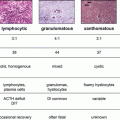© Springer Science+Business Media New York 2015
Terry F. Davies (ed.)A Case-Based Guide to Clinical Endocrinology10.1007/978-1-4939-2059-4_2929. Introduction
(1)
Mount Sinai Bone Program, Mount Sinai School of Medicine, New York, NY 10029, USA
Keywords
OsteoporosisSkeletal fragilityHormonalCytokineImmune stimuli skeletonMicroskeletalHigh resolution tomographyMagnetic resonance imagingBMD-basedT-scoresOver the past decade there has been a radical and rapid evolution not only in our understanding of the pathobiology of osteoporosis but also in our ability to diagnose skeletal fragility and effectively prevent and treat its consequences. This shift has resulted from the remarkable successes in our understanding, through the use of genetically modified mouse models, of how the skeleton is remodeled in time and space, as well as how the reparative process is modulated by hormonal, cytokine, and immune stimuli [1]. These insights have been buttressed by striking advances in technologies used to image the skeleton, resulting in ways by which microskeletal elements, which are responsible in maintaining bone strength and hence, its propensity to fracture, are now visualized by high resolution tomography and magnetic resonance imaging. There has also been a progression, albeit small, in the development and use of new therapies for osteoporosis, with new target-specific agents in development.
All of this has meant that we are able to expand the diagnosis of osteoporosis beyond the traditional realm of BMD-based methods alone. The WHO based the diagnosis of osteoporosis on T-scores that utilized epidemiologic criteria to label patients as osteopenic or osteoporotic. This method has stood the test of time and is currently being used most widely. However, T-scores are derived by comparing a patient’s BMD, which is a measure of bone mineral content across a given area, against a database of ~30-year-old Caucasian women. Two sets of compelling evidence have nonetheless highlighted the need for a BMD-independent tool that can capture patients with fragile skeletons or those at a high risk of fracture. First, biomechanical studies show that the strength of bone is not derived solely from BMD, but that other elements, not yet measurable clinically, contribute to bone strength and fragility. Second, it is clear that patients that display normal BMDs do fracture and that increases in BMD with drug therapy do not necessarily correlate with reduced fracture risk.
In response to the clinical need for the identification of men and women at a high risk of fracture, the WHO developed a risk stratification tool, FRAXTM, which allows us to estimate the 10-year absolute fracture risk in a given patient [2]. This tool allows a country-specific and cost-effective extension of therapeutic thresholds to include patients with a high fracture risk, who otherwise would not be candidates for therapy under BMD-only guidelines. While this is considered a positive step, FRAXTM is said to have its gaps. On its own, it purposefully excludes the perimenopausal or early postmenopausal woman, who is undergoing the most rapid bone loss, but has yet not attained as high an absolute fracture risk as an older postmenopausal woman. Toward this end, there have been attempts to rationalize the use of bone turnover markers, which, to us, provide a valuable point estimate for the rate of bone removal, and hence can predict bone loss [3]. A fear is that, by relying solely on BMD- or fracture risk-based treatment thresholds, health maintenance organizations and third-party payers are likely to shy away further from these young, fast bone losers. On the basis of current evidence for rapid bone loss during and efficacy of therapies across the menopausal transition, we suggest that early identification, follow-up, and treatment of progressive “bone loss” are prudent approaches that will likely prevent a skeleton characterized by “lost bone” and a high fracture risk [3]. These diagnostic challenges have been highlighted in Chap. 29.
Stay updated, free articles. Join our Telegram channel

Full access? Get Clinical Tree




